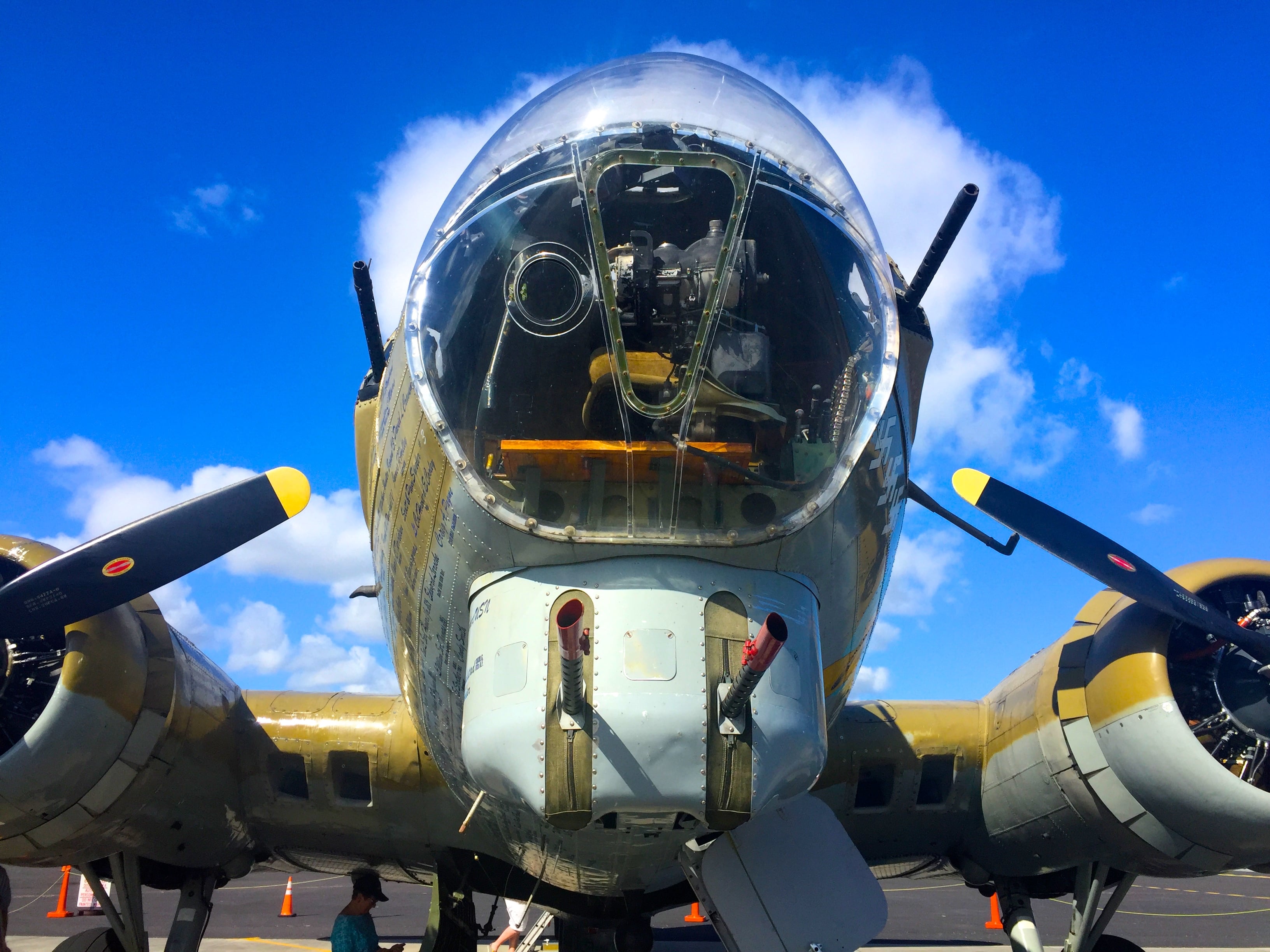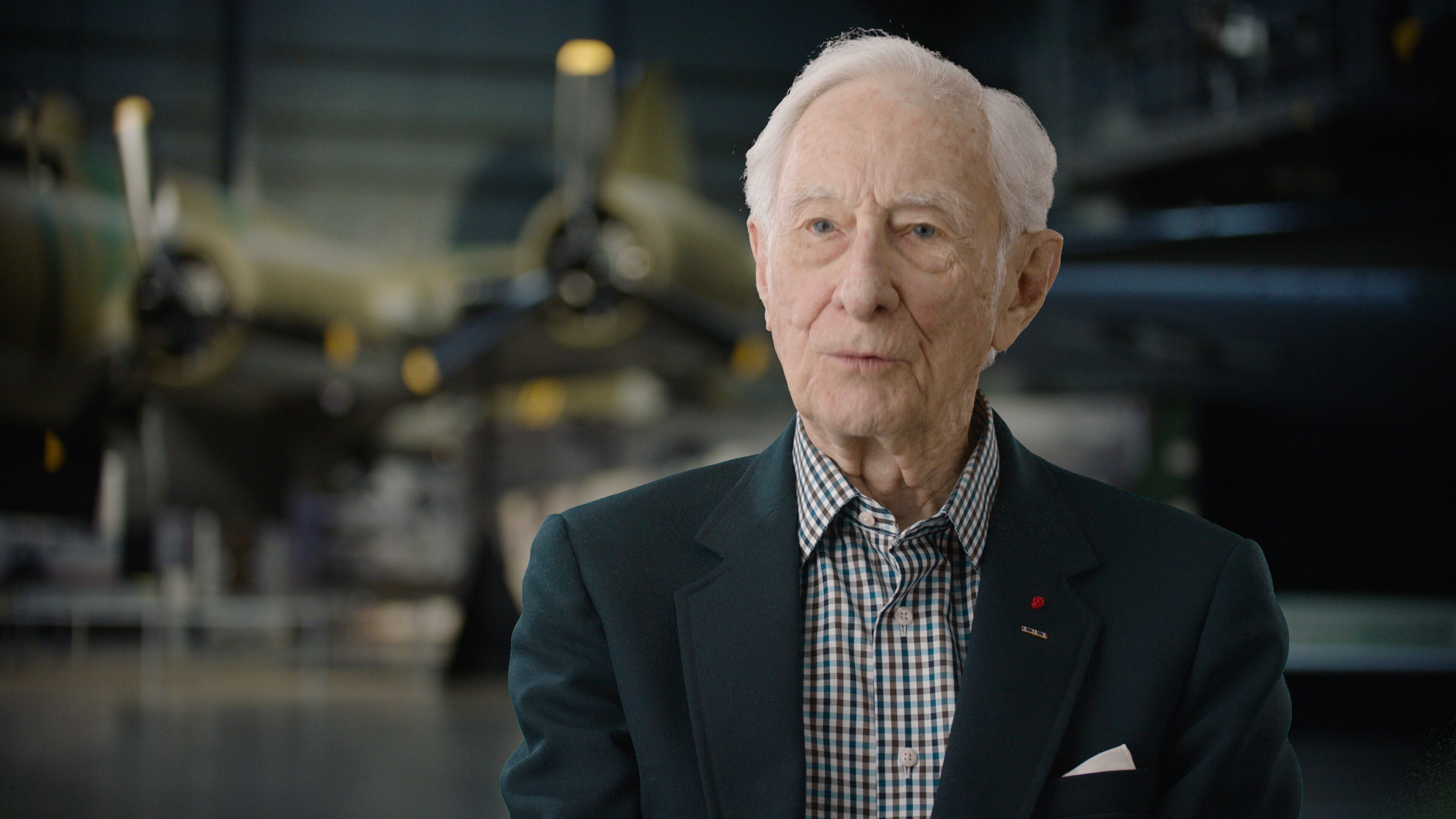The introduction of the Boeing B-17 Flying Fortress bomber signaled a turning tide in the air war over Nazi-controlled Europe.
Cutting edge technology employed by a new bomber command under Gen. Ira Eaker, the Eighth Air Force, allowed the plane to fly at altitudes of approximately 35,000 feet. It was heavily armed, carrying 10 .50-caliber machine guns in addition to its bomb payload. And it had a range of 2,800 miles.
“[It was] the love of my life," Conrad Lohoefer, a flight engineer with the 91st Bombing Group of the U.S. Army Air Forces, said in the documentary, “Memphis Belle in Color,” which airs Nov. 11 at 6 p.m. ET on the Smithsonian Channel.
"They are so strong, so sturdy, and so dependable, and they can take a lot of punishment. I love it to death. I’ll always love it.”
RELATED

Lohoefer’s description of the famed aircraft was echoed throughout the documentary by other surviving B-17 crewmen — the fortunate few who actually made it home.
Odds of a B-17 crewman completing the 25 missions required to finish a tour and go home were only one in four.
Because of the bomber’s distance capability, fighter escorts could not accompany bombing crews taking off from England for targets over Nazi Germany, leaving the hulking aircraft and inexperienced crew exposed to the more seasoned pilots of the German Luftwaffe. This vulnerability would only be remedied by the introduction of the P-51 Mustang and tactics implemented by Medal of Honor recipient Gen. James Doolittle, who assumed command of the Eighth in January 1944.
Worse than dealing with professional German pilots, however, was the incessant exposure to flak. German anti-aircraft batteries peppered B-17 crews with shells hurled five miles into the air that would explode within feet of the planes. To bomb accurately, a B-17 needed to fly at a maximum altitude of 25,000 feet. This meant the threat of shrapnel tearing through a crew’s plane was ever-present.
“Flak was just like Russian roulette,” one B-17 crewman recalls in the documentary. “You were going to be hit by it. It was just a matter of where it would hit you and when.”
B-17 pilot and World War II veteran John “Lucky” Luckadoo, a member of the Eighth’s “Bloody” 100th Bombing Group, recalled the hellacious experience years ago in an interview with the National World War II Museum, saying, “The flak was so thick that you could put your wheels down and taxi on it.”
Lucky spoke with Military Times about flying under these extreme conditions. On Oct. 8, 1943, he took to the sky for his 22nd mission. And while Lucky would complete the 25 he needed to be sent home, this day would be forever etched into his memory.
“We experienced the heaviest anti-aircraft defense that we had ever seen,” he said.
“The Germans had moved in some 300 88mm guns to protect their targets. We had never seen them throw up such a heavy barrage of defenses. Also, what we had never experienced or witnessed before was the fact that their fighters were attacking us through their own flak.”

The Germans’ uncharacteristically suicidal tactics Lucky witnessed that day were just getting underway.
“As we turned on the initial point for our bomb run, I noticed out of the corner of my eye that there was this flight of Focke-Wulf 190s that were headed straight for our squadron,” he recalled.
“They fired all the way coming in and of course our gunners were pouring out as much as they could to dissuade them, but they never veered in the slightest. The lead airmen of the fighters actually rammed the ship directly in front of me. It blew it out of formation and they both exploded.”
Lucky was forced to dip the nose of his plane to avoid a midair collision.
“His wingman actually scraped my top turret as he went across. That’s how close they came to ramming me.”
Amidst the exchange, one of Lucky’s engines had been taken out by flak. Worse, the plexiglass nose of his plane blew out, leaving the pilot and the crew of the unpressurized plane exposed to temperatures of 50-below at 21,000 feet.
“I suffered the only injury, physical injury, of my entire tour on that mission, and that was frostbitten feet,” he said. “They were frozen to the rudder pedals so when I landed I had to land with my heels. I couldn’t even apply the brakes.
"The horror of that mission stayed with me for the rest of my tour.”
By the end of February 1943, half of the crews belonging to the “Mighty Eighth" had been shot down.
Memphis Belle pilot Capt. Robert Morgan noted, tragically, that it seemed like each day, airmen would have breakfast with a crew of 10 but dinner with just two.
Morgan and his crew would become the eventual subjects of Oscar-winning director William Wyler’s film, “Memphis Belle: A Story of a Flying Fortress.”
Wyler’s movie, coupled with the crew of the Belle embarking on a war bond tour upon finishing its 25th mission, would serve to raise American morale in providing living proof of surviving the air war and defeating Nazi Germany.
“The Memphis Belle, at its heart, is an American icon," Jeff Duford, a curator for the National Museum of the U.S. Air Force, told Smithsonian.
“It has the same cultural significance of the flag that was raised on Mount Suribachi, or the [USS] Arizona in Pearl Harbor. It represents something much larger than the artifact itself.”
Check this list for upcoming showtimes for the Smithsonian Channel’s “Memphis Belle in Color.”
J.D. Simkins is the executive editor of Military Times and Defense News, and a Marine Corps veteran of the Iraq War.
Claire Barrett is the Strategic Operations Editor for Sightline Media and a World War II researcher with an unparalleled affinity for Sir Winston Churchill and Michigan football.





